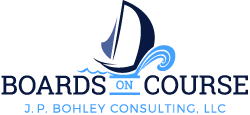Tip #21 How to Engage with Your Organization's Key Stakeholders/Owners
In our last two Tips for Effective Boards, we defined an organization’s key stakeholders or owners as those people on whose behalf the board governs and to whom it is accountable and provided some guidance for boards to identify their key stakeholders or owners. Now we will focus on how to dialogue with them and what to talk about.
Once you have identified your organization’s ownership, it is important to identify subsets or categories of ownership and how you plan to dialogue with and gain input from them. For example, you may decide to do a telephone survey of the general population and focus groups in different geographic areas served by your organization. You may decide to do community meetings in different neighborhoods to reach members of different racial, ethnic, religious, and income groups. You may decide to hold meetings at churches and senior centers to hear the perspectives of churchgoers and older persons. You may invite to your board meetings representatives of key groups (high school students, law enforcement personnel, board members of other organizations that have ownerships similar to yours). Or you may decide to have each board member interview a couple key community leaders and report back to the full board.
It is important that the board assume responsibility for the management and coordination of this ownership linkage or key stakeholder dialogue function and directly engage in this conversation rather than rely on ownership input provided through summaries completed by staff. Of course, staff are available to provide critical administrative support. In this process, the board is learning not just about their organization’s owners but directly from their owners.
So, what do you talk about? Primarily you talk about your organization’s purpose, your organization’s reason for existence. What positive differences should your organization be making in people’s lives? In other words, who should your organization’s customers or beneficiaries be and what benefits should they be receiving from your organization? What should your organization’s priorities be regarding benefits to be produced and people to be benefited?
Organizations may find it helpful to have a multi-year plan which may identify which ownership groups to dialogue with each year and what means to use for this dialogue (survey, community meeting, focus group, board meeting discussion with invited guests, etc.). And don’t forget to get back to your owners about what you’ve learned and actual results that your organization is producing in people’s lives. Don’t make this overwhelming. Start small and keep it manageable.
While the concept of “ownership” is foundational to the Policy Governance® system, it is important for all boards, whether they embrace Policy Governance® or not, to be very clear about those people who are the source of their authority and legitimacy, those people on whose behalf they govern and to whom they are accountable, and to engage in ongoing dialogue with them.
If you haven’t already done so, consider making a commitment to developing clarity about who your owners/key stakeholders are and begin an ongoing dialogue with them.
Ownership Linkage is a key component of the Policy Governance® system. For more information about the Policy Governance® system, please go to www.BoardsOnCourse.com/policy-governance.
